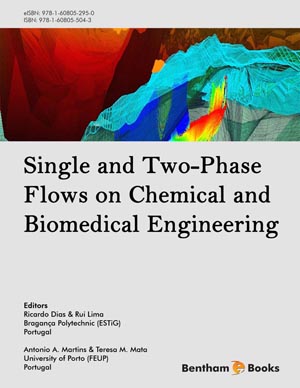Abstract
The hydrodynamics of gas-liquid bubble columns operated in the churnturbulent regime are studied by examining the liquid turbulence along the height of the bubble bed (based on chaotic and statistical methods). In the case of air-water and nitrogen-PSS8 systems based on comparison of the KE values along the height of the bubble bed it is shown that the degree of liquid turbulence (chaos) is stronger in the vicinity of the gas distributor and it increases again in the upper part of the reactor. These results help to understand better the occurrence of the circulation zones in the bubble bed. The work includes results from five different bubble columns (0.1, 0.16, 0.19, 0.38 and 0.8 m in inner diameter) equipped with porous or perforated plate distributor or cross sparger. The boundaries of the various flow regimes in different gasliquid systems are also identified. Five different liquids (tap water, Therminol LT, polyalphaolefin liquid (PSS8), 1-butanol and gasoline) and two different gases (nitrogen and air) are used. Different measurement techniques (Computer-Automated Radioactive Particle Tracking, Computed Tomography, Nuclear Gauge Densitometry, differential pressure and absolute pressure transducers) are employed. It is found that by means of the Kolmogorov entropy (KE) algorithm, average cycle time and the average absolute deviation can be identified the boundaries of chain-bubbling regime, bubbly flow regime, first and second transition regimes and coalesced bubble regimes (consisting of 4, 3, 2 and 1 regions). The results can be used for the preparation of flow regime maps.
Keywords: Bubble columns, hydrodynamics, flow regime identification, churnturbulent flow regime, liquid turbulence, nonlinear chaos analysis, time series, kolmogorov entropy, information amount, degree of chaos, nonintrusive radioactive techniques, pressure transducers, gas holdup measurements, zones of enhanced turbulence






















